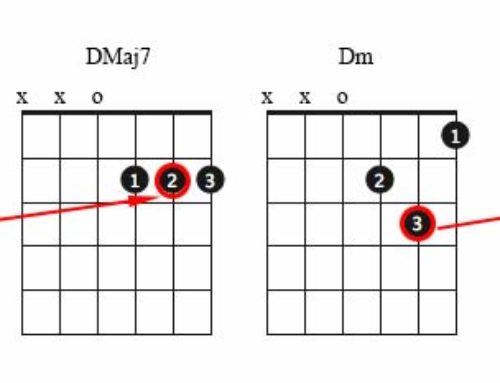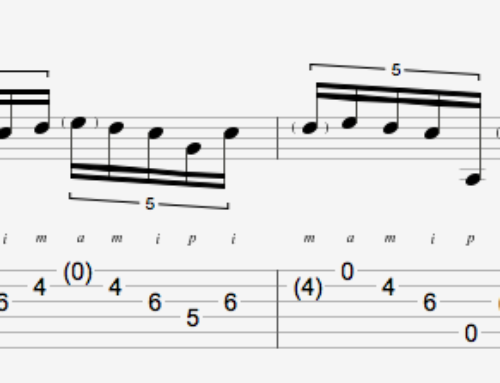Understanding Keys & Chord Progressions (Basic)
Learning a few basics about Keys & Chord Progressions can make a real difference if you are new to working out songs by ear or transcription in general.
I’m going to try to explain these subjects as concisely as possible, avoiding academic terminology as much as possible.
A chord progression is just a series of chords.
The reality is, the vast majority of popular music songs are based on a finite amount of chord progressions.
Once you know the progression, you can play the song in whatever key you wish.
So first let’s establish the notes of each key
If you don’t want to read about the circle of fifths you can jump cut straight to the 1st table below
The key of C has all natural notes but there are keys which contain sharps and keys which contain flats.
To get the sharp’s Keys we follow 2 simple rules:
1: Go to the 5th note of one key to get the 1st note of the new key
2: Sharpen the last note of the new key and carry any sharps from the previous key into the new key
Start with the Key of C which has no sharps or flats.
C D E F G A B
Next we go to the 5th note which in this case is G and make the last noted sharp as in rule 2 above
G A B C D E F#
Next we go to the 5th note which in this case is D make the last noted sharp and carry the F# as in rule 2 above
D E F# G A B C#
We continue this process to get the following keys.
You can of course just memorise this table if you don’t care about how we get from one key to the next but I think it’s nice to understand the circle of fifth’s. It is a useful tool and has many applications
| C | D | E | F | G | A | B |
| G | A | B | C | D | E | F# |
| D | E | F# | G | A | B | C# |
| A | B | C# | D | E | F# | G# |
| E | F# | G# | A | B | C# | D# |
| B | C# | D# | E | F# | G# | A# |
| F# | G# | A# | B | C# | D# | E# |
Ok, next to the chords that go with these notes.
We assign Roman numerals to each note.
We use upper case Roman Numerals for Major and lower case Roman Numerals for minor
The chords follow the pattern:
Major, minor, minor, Major, Major, minor, diminished.
So the pattern is as follows: I ii iii IV V vi viio
So for the key of C that would be:
| I | ii | iii | IV | V | vi | vio |
| C | Dm | Em | F | G | Am | B dim |
Therefore the progression I iii IV V would be C Em F G
I V vi IV would be C G Am F and so on….
Here is the expanded table including all the keys we covered above.
| I | ii | iii | IV | V | vi | vio |
| C | Dm | Em | F | G | Am | B dim |
| G | Am | Bm | C | D | Em | F# dim |
| D | Em | F#m | G | A | Bm | C# dim |
| A | Bm | C#m | D | E | F#m | G# dim |
| E | F#m | G#m | A | B | C#m | D# dim |
| B | C#m | D#m | E | F# | G#m | A# dim |
| F# | G#m | A#m | B | C# | D#m | E# dim |
All you need to do is choose the key, say B for instance.
A I vi IV V progression in B would be B G#m E F#
Finally….
To complete the picture, although they are less used in popular guitar music we will quickly look at the keys that contain flats.
1: Go to the 4th note of one key to get the 1st note of the new key
2: Flatten the 4th note of the new key and carry any flats from the previous key into the new key
Or once again, you can just memorise the table :D
| I | ii | iii | IV | V | vi | vio |
| F | Gm | Am | Bb | C | Dm | E dim |
| Bb | Cm | Dm | Eb | F | Gm | A dim |
| Eb | Fm | Gm | Ab | Bb | Cm | D dim |
| Ab | Bbm | Cm | Db | Eb | Fm | G dim |
| Db | Ebm | Fm | Gb | Ab | Bbm | C dim |
| Gb | Abm | Bbm | Cb | Db | Ebm | F dim |
Now that you know that, it is good to learn some easy and very popular chord progressions. Here are a few for you to start with
I IV V: Those 3 chords played in any order, there are too many songs to even mention
I V vi IV (Don’t stop believing, With or Without you etc)
vi IV I V (If I were a Boy etc…)
I vi IV V ( Stand by me, Earth Angel etc…) This is called the 50’s or Doo Wop progression
I iii IV V (Thinking out Loud etc…)
Playing in as many keys as you can, spend some time playing and really getting to know the sound of each progression so when you next hear a song that contains it, you will recognise it straight away




